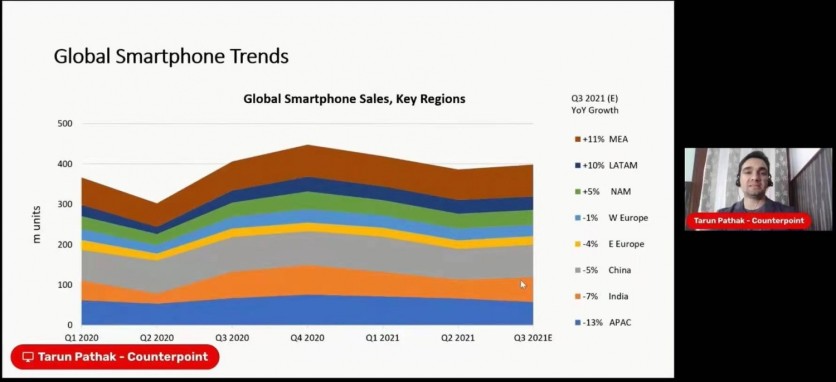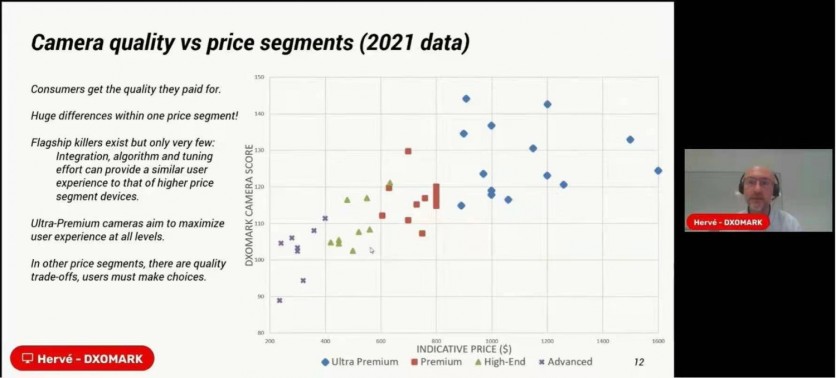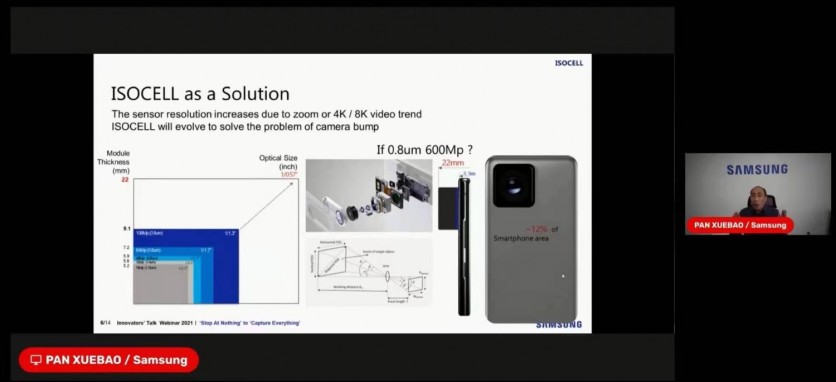
TECNO, Samsung Electronics, DXOMARK are beginning to think about 2022 and beyond for the mobile imaging industry at Counterpoint's industry innovation talk.
November 25, 2021 - During a webinar entitled "Global Mobile Camera Trends 2022: Innovation Talk", the future of key optical imaging technology was heavily featured and debated about, charting the evolution of camera systems, and how they have become the centrepiece of which consumers evaluate smartphones.
The webinar was organized by Counterpoint, an influential technology research firm, with guest speakers from TECNO, a premium smartphone brand focusing on rapid-growth emerging markets, as well as Samsung Electronics, a global leader in semiconductor, telecommunication, digital media and digital convergence technologies, and DXOMARK, an internationally renowned testing agency specialized in cameras, audio, displays, and batteries for consumer electronics.
Hosted by Counterpoint Research's Peter Richardson, VP of Research, speakers including Tarun Pathak, Hervé Macudzinski, Pan Xuebao, and Jimmy Hsu shared their understandings and insights on camera innovation, market trends, and the latest developments in imaging technology.

Tarun Pathak, Counterpoint's Director of SmartphoneResearch, made remarks about smartphone development trends, including megapixels, multi-cam, CIS content per smartphone, etc. He mentioned that driven by burgeoning mid-end smartphones across developed and emerging markets, such as Africa, Latin America, India, etc., quad and above will be the dominant form factor. He said, "the combination of quality image sensors and advanced software algorithms is allowing brands to deliver great imaging experiences across all smartphone price points."

Hervé Macudzinski, Image Science Director and Product Owner of DXOMARK said that smartphones today help bring DSLR capture quality and pro photographer's skills into the hands of consumers. When talking about the relations between price and quality trade-offs in segments, he described that low-light imaging is arguably a priority for devices in the highly competitive $400-$600 price segments, while in other price segments, users must make choices regarding quality trade-offs.

Pan Xuebao, VP and Head of R&D at Samsung Electronics, said, "We're close to the point where smartphone brands can now deliver DSLR-grade photography in the hands of customers." He mentioned that Samsung's Tetra and Nona pixel-merging technology has overcome these issues, bringing great performance across both bright light where high resolution is needed, and low light where the merged pixels provide a bigger canvas to capture more light. Samsung is also bringing faster auto-focus with its ISOCELL tech.

Jimmy Hsu, Senior Product Manager of TECNO Image Technology, began with an introduction of mobile camera's trends in two dimensions, imaging and sensing. He mentioned that with a more diverse and personalised demand from consumers for smartphones images, ToF and DVS could be the opportunities in the future where mobile phone cameras can outperform cameras. Then Mr. Hsu highlighted TECNO's advances in dark complexion imaging and recent achievements and breakthroughs regarding light sensitivity, image and video stabilization, zoom and high-resolution, powered by technologies such as RGBW and G+P, Sensor Shift and telescopic lenses. He promised some of these new technologies are slated for TECNO's new products in 2022. Mr. Hsu expressed that TECNO always aims to provide an excellent photography and videography experience through constant innovation and a deep understanding of consumer needs.
Media representatives and industry players from Africa, Southeast Asia, Europe, and the US also participated in the webinar, exchanging their perspectives with the speakers on issues that interest tech-savvy mobile users and photo enthusiasts all around the world.
The webinar highlighted future mobile camera imaging technology trends and provided the audience with in-depth insights and descriptions of industry-leading technologies within the sector. It set expectations of the application of these imaging technologies for global markets and consumers, paving the way for further long-term smartphone imaging developments.
ⓒ 2025 TECHTIMES.com All rights reserved. Do not reproduce without permission.




